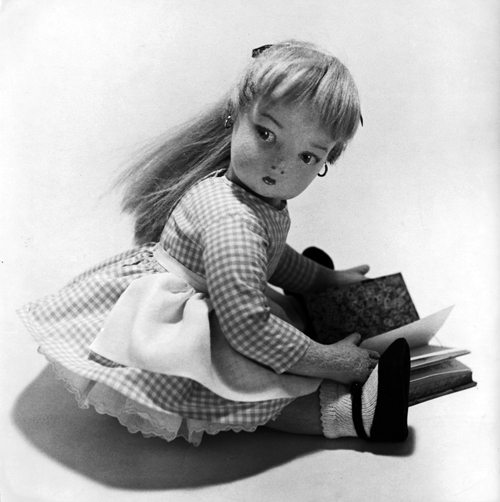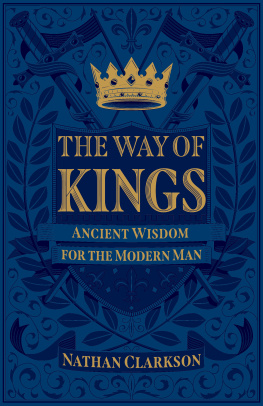Contents
Guide


The author and publisher have provided this e-book to you for your personal use only. You may not make this e-book publicly available in any way. Copyright infringement is against the law. If you believe the copy of this e-book you are reading infringes on the authors copyright, please notify the publisher at: us.macmillanusa.com/piracy.
Contents
For W.E.N.
My childhood bends beside me. Too far for me to lay a hand there once or lightly. Mine is far and his secret as our eyes. Secrets, silent, stony sit in the dark palaces of both our hearts: secrets weary of their tyranny: tyrants willing to be dethroned.
JAMES JOYCE, Ulysses

Prologue
Some books are undeservedly forgotten; none are undeservedly remembered.
W. H. A UDEN , The Dyers Hand
It was on the first day of spring that the oddest image floated into my mind: the cover of a childrens book I hadnt seen or even thought of in over thirty years. At first I could barely make it out. It was no more than the image of a pattern, pink-and-white gingham. But there it lodged and there it remained; it felt as if it were a message, and from the farthest edge of consciousness. Its insistence startled me. I tried to tromp it down. I lived among the grown-ups now. I was a journalist, fourteen years into a career that had taken me from newspaper reporter to magazine editor to freelance writer. On this day, a deadline loomed. I had work to do.
But the image kept flashing in my mind, becoming clearer and clearer, like a photograph developing, until I could see that the gingham was a frame of sorts, surrounding a photograph, a black-and-white photograph of a blond-haired wide-eyed doll, an open book between her outstretched legs. The Lonely Doll . That was the title. Encouraged, I strained to peel back the layers of memory, to summon up at least something about its narrative. But that was all I could come up with: the image of the cover, its title, and the fact that it had once fascinated me.
* * *
My first stop was one of the best childrens bookstores in New York, a store known for its experienced staff. I asked the clerk behind the front desk if they had the book. It was out of print, he said, adding that it was just as well. He murmured something about it being politically incorrect. Curiouswere we talking about the same book?I asked why. The spanking scene, he scoffed.
I had no recollection of any spanking scene. Could he give me the information I would need to find the book elsewhere? Consulting his computer, he read it out to me and I wrote it down: Dare Write, Doubleday, 1957. As I turned to leave, he called me back, pointing to a rack of business cards by the cash register. An enterprising book searcher whose specialty was childrens books had placed the cards there. She might be able to help me.
The New York Public Library listed several copies of The Lonely Doll but none now fit to circulate; beside each notation in the electronic card catalog were the words damaged or missing. This, the childrens librarian told me, was the sign of a well-loved book. Children read their favorite books to death, she said. They are careless in their devotions. They rip the pages, scribble, and spill things on them. And they are demon book thieves. At least I had now cleared up the spelling of the authors last name. It was Wright.
I had misplaced the book searchers card but I did remember her name and found her number in the phone book. Unlike the bookstore clerk, she passed no judgment, but she surprised me too, offering to add my name to her long waiting list. I couldnt imagine why anyone else would be thinking of this book. And people willing to spare no expense: A copy in good condition could cost $200, she informed me. Should she go ahead and add my name to the list? I thanked her anyway, unwilling to pay such a sum to satisfy such an ill-defined curiosity. She asked if I would be interested in a paperback copy. That would run about $30, although the wait might be longer still. The price seemed more in line; I gave her my address and credit card number. As I put down the receiver, I felt an almost childish sense of disappointment at more delay, but also astonishment to learn that the book lived on in other peoples consciousnesses.
Meaning to put the phone book away, I found myself turning absently to Wright. And there, jumping out at me from blurred columns of type, was Wright, Dare, 11 East 80th Street, 249-6965. I dont think I could have been any more amazed if the address given had been, say, Second to the right and then straight on till morning, Peter Pans address on the island of Neverland.
* * *
In the weeks to come I dialed the number many times. There was never an answer. One day I set off for 11 East 80th Street, but on the way I lost my nerve. What would I do once I got there? Ring the doorbell? I decided instead to write a letter. In it, I explained that I had been a fan of her book as a child and asked if she knew where I might find a copy. Optimistically, I enclosed my phone number. As I addressed the envelope, it occurred to me that what I was really doing was sending a letter to my childhood, or trying to. But time passed and I heard nothing. My attempt to make contact through writing was proving as fruitless as my phone calls. Maybe this Dare Wright had died.
Some weeks later, a package arrived, wrapped in brown paper, actually a recycled grocery bag. As I tore it open carefully, I could see the pink-and-white gingham peeking through. There was the cover, just as I remembered it; there was the doll, a black ribbon tied around her high blond ponytail, her bangs, her gold hoop earrings, her gingham frock, the lace petticoat beneath it, the starched white apron over, and between her outstretched legs, ending in white socks and Mary Janes, an open book. It was all exactly as I had pictured itdown to the downward glance of her painted-on eyes.
I opened it slowly and began to read the story of a little doll named Edith who lived in a nice house and had everything she needed except somebody to play with. I studied the photographic illustrations of Edith, eating her cereal all by herself, wishing for company, and at night kneeling by her bed praying for friends. Even the pigeons she feeds on her terrace fly away as she begs them to stay and talk to her.
One morning, two teddy bears appear on the terrace. They tell her theyve come to be her friends. Edith isnt lonely anymore as the bears move in, providing a home life and taking her on wondrous adventures around New York City and to the beach.
Then one rainy day, Mr. Bear, umbrella in paw, sets off on an undisclosed errand, leaving Edith and Little Bear on their own with only an admonition to stay out of trouble. Edith despairs, wondering how they will find a way to entertain themselves. Theres nothing for us to play indoors, she grumbles. Little Bear suggests they explore the house. Soon they discover, behind a set of louvered doors, a glamorous dressing room with a vanity table and a big round mirror. While Edith considers her reflection, Little Bear comes upon a womans closet, filled with an enticing array of clothing, shoes, and accessories.

















